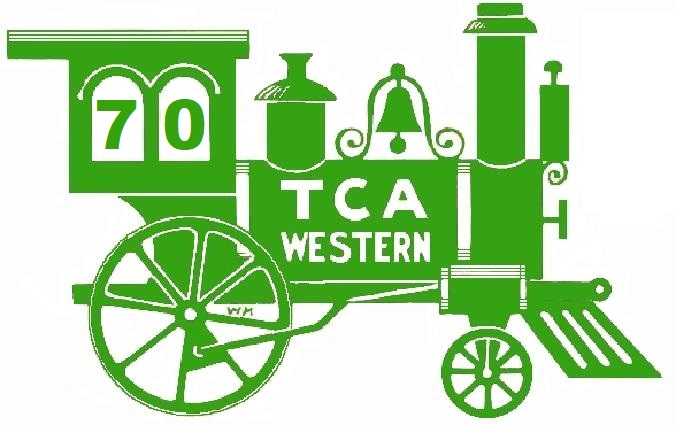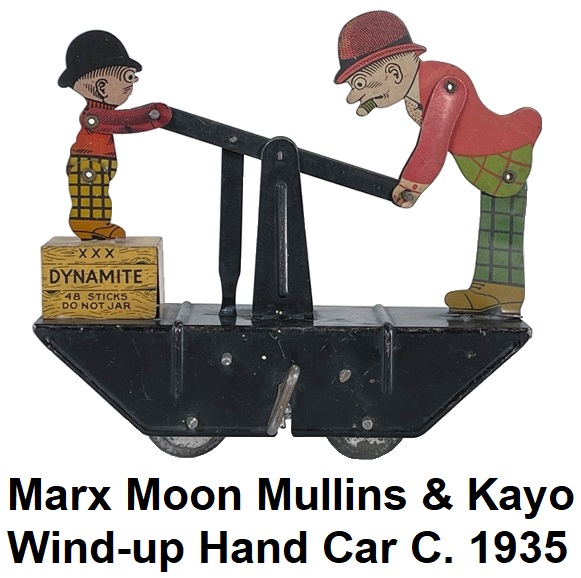 Louis Marx & Co. was a popular American manufacturer of toys and trains founded in 1919 by brothers Louis and David
Marx. During its production years, Marx made both electric and clockwork trains in multiple sizes, 6 of which operated
on 'O' or 'O-27' gauge track, and HO gauge trains as well. The company usually supplied products at the price niche
below Lionel and American
Flyer, making it popular with consumers who could not afford those brands. Marx train production started in 1934 with
the purchase of Joy Line trains. Prior to that acquisition, Louis Marx was a commissioned sales
representative for the Girard Company's Joy Line products. Louis Marx & Co. issued train sets under several brand names
including Allstate, Marlines, Linemar and Stream Line. Marx toys have the reputation of being one of the most recognized,
respected and popular names among today's antique toy collectors.
Louis Marx & Co. was a popular American manufacturer of toys and trains founded in 1919 by brothers Louis and David
Marx. During its production years, Marx made both electric and clockwork trains in multiple sizes, 6 of which operated
on 'O' or 'O-27' gauge track, and HO gauge trains as well. The company usually supplied products at the price niche
below Lionel and American
Flyer, making it popular with consumers who could not afford those brands. Marx train production started in 1934 with
the purchase of Joy Line trains. Prior to that acquisition, Louis Marx was a commissioned sales
representative for the Girard Company's Joy Line products. Louis Marx & Co. issued train sets under several brand names
including Allstate, Marlines, Linemar and Stream Line. Marx toys have the reputation of being one of the most recognized,
respected and popular names among today's antique toy collectors.
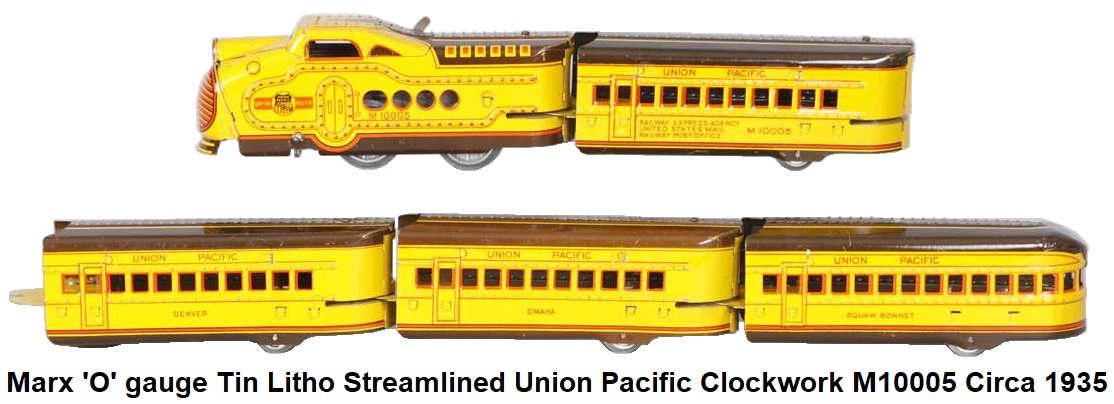
Louis Marx, was born in Brooklyn, NY, in 1896. At the age of sixteen, Marx began working for
Ferdinand. J. Strauss Company, a toy manufacturer that produced items for Abraham & Strauss Department
Stores. His energy and enthusiasm helped him to become a manager by the time he was twenty.
In 1919, Marx had a falling out with Strauss. Deciding that it was time to venture out on his own, he
established Louis Marx & Co., and set up office at 200 Fifth Avenue, in New York City, which was known as the toy center. Marx
started his company with virtually nothing. He had no money, machinery, products, patents,
or customers, but what he lacked in resources, he more than made up for in seemingly endless
 energy and determination. He wasted no time and started contracting with manufacturers to
produce toys that he designed.
energy and determination. He wasted no time and started contracting with manufacturers to
produce toys that he designed.
His brother David decided to join him a couple of years later. Louis had the business,
designing, and marketing skills, and David was the man behind the operations. The two
of them together would grow to be the world's largest toy manufacturer.
Marx boxes were imprinted with the slogan, "One of the many Marx toys, have you all of them?"
The Marx logo consisted of the letters "MAR" in a circle with a large X through it, resembling a railroad
crossing sign. Because of this, Marx toys are sometimes misidentified as "Mar" toys.
Marx's toys included tinplate buildings, toy soldiers, toy dinosaurs, mechanical toys, toy guns,
action figures, dolls, doll houses, toy cars, floor trains and after the acquisition of Joy Line, HO scale and 'O' scale
toy trains that ran on tracks. Marx's less-expensive toys were extremely common in dime stores, and its larger, costlier
toys were staples for catalog retailers such as Sears and Montgomery Ward, especially around Christmas time.
 Although the company is now largely forgotten except by toy collectors, several of its toys remain well known. Rock'em Sock'em
Robots, introduced in the 1960's, remained popular for years and has been reintroduced by several different companies. Louis
Marx & Co. also obtained several popular character licenses, including Popeye and the Flintstones. The company also created
some Walt Disney themed items. Its last hurrah was the Big Wheel ride-on pedal toy, which was introduced in 1969 and became
one of the most popular toys of the 1970's.
Although the company is now largely forgotten except by toy collectors, several of its toys remain well known. Rock'em Sock'em
Robots, introduced in the 1960's, remained popular for years and has been reintroduced by several different companies. Louis
Marx & Co. also obtained several popular character licenses, including Popeye and the Flintstones. The company also created
some Walt Disney themed items. Its last hurrah was the Big Wheel ride-on pedal toy, which was introduced in 1969 and became
one of the most popular toys of the 1970's.
 The company's basic policies were "Give the customer more toy for less money," and "Quality
is not negotiable," which made the company highly successful. Initially the company had no
product designs and no manufacturing capacity, so Marx raised money by positioning itself
as a middle man, studying available products, finding ways to make them cheaper, and then
closing a sale. Funds raised from these efforts proved sufficient to purchase tooling for two obsolete tin toys called the
Alabama Minstrel Dancer and Zippo the Climbing Monkey from toymaker Ferdinand Strauss, one of Louis Marx's former employers.
With subtle changes, Marx was able to turn these toys into hits, selling more than 8 million of each within two years. Marx
then bought the company it had subcontracted to manufacture the toys. By 1921, they were able to start independently
producing toys from their own designs. By 1922, both Louis and David Marx were
millionaires. Initially Marx produced few original toys, but was able to predict what toys would
be hits and manufacture them less expensively than the competition. The yo-yo is an example:
Although Marx is sometimes wrongly credited with inventing the toy, Marx was quick to market
its own version, and during the 1920's sold an estimated 100 million of them.
The company's basic policies were "Give the customer more toy for less money," and "Quality
is not negotiable," which made the company highly successful. Initially the company had no
product designs and no manufacturing capacity, so Marx raised money by positioning itself
as a middle man, studying available products, finding ways to make them cheaper, and then
closing a sale. Funds raised from these efforts proved sufficient to purchase tooling for two obsolete tin toys called the
Alabama Minstrel Dancer and Zippo the Climbing Monkey from toymaker Ferdinand Strauss, one of Louis Marx's former employers.
With subtle changes, Marx was able to turn these toys into hits, selling more than 8 million of each within two years. Marx
then bought the company it had subcontracted to manufacture the toys. By 1921, they were able to start independently
producing toys from their own designs. By 1922, both Louis and David Marx were
millionaires. Initially Marx produced few original toys, but was able to predict what toys would
be hits and manufacture them less expensively than the competition. The yo-yo is an example:
Although Marx is sometimes wrongly credited with inventing the toy, Marx was quick to market
its own version, and during the 1920's sold an estimated 100 million of them.
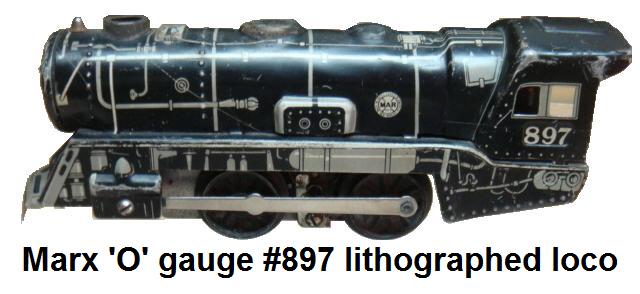 Unlike most companies, Marx's revenues grew during the Great Depression. By 1937, the company had
more than $3.2 million in assets ($62.6 Mil. in 2021 dollars), with debt of just over $500,000. Marx
was the largest toy manufacturer in the world by the 1950's. In a 1955 article, Time Magazine
proclaimed Louis Marx "the Toy King," and that year, the company had about $50 million in sales. It was
there he boasted about his annual advertising budget of $312.00, something he took pride in, and rightfully so.
Marx was the initial inductee in the Toy Hall of Fame, and his plaque proclaimed him "The Henry
Ford of the toy industry."
Unlike most companies, Marx's revenues grew during the Great Depression. By 1937, the company had
more than $3.2 million in assets ($62.6 Mil. in 2021 dollars), with debt of just over $500,000. Marx
was the largest toy manufacturer in the world by the 1950's. In a 1955 article, Time Magazine
proclaimed Louis Marx "the Toy King," and that year, the company had about $50 million in sales. It was
there he boasted about his annual advertising budget of $312.00, something he took pride in, and rightfully so.
Marx was the initial inductee in the Toy Hall of Fame, and his plaque proclaimed him "The Henry
Ford of the toy industry."
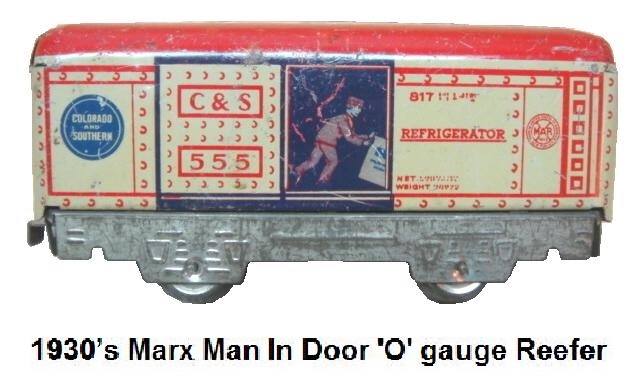 At its peak, Louis Marx and Company operated three manufacturing plants in the United States:
Erie, Pennsylvania, Girard, Pennsylvania (original factory where the Joy Line toy trains were produced), and
Glen Dale, West Virginia. The Erie plant was the oldest and largest, while the Girard plant, acquired in 1934 with the
purchase of Girard Model Works, produced toy trains, and the Glen Dale plant produced toy cars.
At its peak, Louis Marx and Company operated three manufacturing plants in the United States:
Erie, Pennsylvania, Girard, Pennsylvania (original factory where the Joy Line toy trains were produced), and
Glen Dale, West Virginia. The Erie plant was the oldest and largest, while the Girard plant, acquired in 1934 with the
purchase of Girard Model Works, produced toy trains, and the Glen Dale plant produced toy cars.
 Louis Marx offered his first trains for sale under the Marx moniker in 1934.
What was offered that first year was Joy Line sets consisting of old stock, packaged in Marx boxes. The Joy Line
trains were simple lightweight tinplate lithographed short fanciful 4-wheel models (around 5½" long) that operated on
'O' gauge track. That year's production also included the new Marx tinplate Union Pacific M10000 articulated
streamlined passenger set that used the Joy Line motor. For its early electric and windup trains, as it did for most of
its toy line, Marx employed the lithography process for printing colors, letters and images on the metals it utilized
to form the items. The trains were designed so that a single flat sheet of lithographed tinplate could be formed, folded
and bent to construct the shell. A second sheet was stamped into the shape of the frame. The two pieces were meshed
together using tabs on the shell that were bent after being placed into slots on the frame. Because of this approach to
sturdy construction, Marx trains were built to last.
Louis Marx offered his first trains for sale under the Marx moniker in 1934.
What was offered that first year was Joy Line sets consisting of old stock, packaged in Marx boxes. The Joy Line
trains were simple lightweight tinplate lithographed short fanciful 4-wheel models (around 5½" long) that operated on
'O' gauge track. That year's production also included the new Marx tinplate Union Pacific M10000 articulated
streamlined passenger set that used the Joy Line motor. For its early electric and windup trains, as it did for most of
its toy line, Marx employed the lithography process for printing colors, letters and images on the metals it utilized
to form the items. The trains were designed so that a single flat sheet of lithographed tinplate could be formed, folded
and bent to construct the shell. A second sheet was stamped into the shape of the frame. The two pieces were meshed
together using tabs on the shell that were bent after being placed into slots on the frame. Because of this approach to
sturdy construction, Marx trains were built to last.
 In 1935 Marx replaced the Girard/Joy Line trains with its own newly designed line of less whimsical 6" tin lithographed
cars. The Marx trains were still more toy-like than scale models. They were small 'O' gauge trains designed to run
on 'O-27' narrow radius track. Most cars had 4 wheels, but a few were made with 2 sets of 4-wheel trucks. These 6" cars
were decorated with the heralds and names of real railroads and remained in the line through 1972.
In 1935 Marx replaced the Girard/Joy Line trains with its own newly designed line of less whimsical 6" tin lithographed
cars. The Marx trains were still more toy-like than scale models. They were small 'O' gauge trains designed to run
on 'O-27' narrow radius track. Most cars had 4 wheels, but a few were made with 2 sets of 4-wheel trucks. These 6" cars
were decorated with the heralds and names of real railroads and remained in the line through 1972.
 For its electric trains, Marx standardized all its locomotives with a reliable open frame
AC motor that enabled quality product while still keeping costs to a minimum. This simple motor had 2 affixed
axles with the drivers attached. The axle of the armature had a gear affixed on one end. That gear meshed with
others to drive the wheels. The early Marx locos had a single reduction gearing, the result being drive wheels
geared inside the flange. These 'fat wheels' appear on Marx locomotives as late as the early 1950's. Unfortunately, the
fat wheels make it impossible for the Marx locomotives to negotiate any other manufactuer's switches or crossovers.
The center rail pickup shoe on a Marx motor is a copper strip. The shoe glides over the top of the middle track rail,
buffeted by a spring. These inexpensive pickups remained in use during all Marx manufacturing periods. The shoe makes it
difficult for some Marx trains to negotiate the 5-rail Lionel operating track and switches. Most can get through, provided
they don't have a fat wheel.
For its electric trains, Marx standardized all its locomotives with a reliable open frame
AC motor that enabled quality product while still keeping costs to a minimum. This simple motor had 2 affixed
axles with the drivers attached. The axle of the armature had a gear affixed on one end. That gear meshed with
others to drive the wheels. The early Marx locos had a single reduction gearing, the result being drive wheels
geared inside the flange. These 'fat wheels' appear on Marx locomotives as late as the early 1950's. Unfortunately, the
fat wheels make it impossible for the Marx locomotives to negotiate any other manufactuer's switches or crossovers.
The center rail pickup shoe on a Marx motor is a copper strip. The shoe glides over the top of the middle track rail,
buffeted by a spring. These inexpensive pickups remained in use during all Marx manufacturing periods. The shoe makes it
difficult for some Marx trains to negotiate the 5-rail Lionel operating track and switches. Most can get through, provided
they don't have a fat wheel.

Marx created its own versions of the popular trains of the times. Its Mercury set was based on a New York
Central streamliner prototype. The 1935 expansion of the Marx train line included the Commodore Vanderbilt engine that was
released in both clockwork and electric versions, along with new streamlined passenger coaches and freight cars that were
 equipped with Joy Line couplers. The M10000 and M10005 streamliners of the Union Pacific were reproduced in several color
schemes, followed by the streamlined Canadian Pacific Royal Hudsons. Early tinplate freight cars included box cars, reefers,
stock cars, gondolas, and a cupola caboose. Operating cars included a flat with searchlights and a crane car. The success
of Marx trains is attributed to the simplicity of the designs that facilitated economical manufacture, while still achieving
a degree of realism and play value. The lithographed patterns on these trains included rivets, doors, window shades and real
railroad heralds. Eventually Marx released its #999 steam outline loco made using a die-cast metal shell. The #999 was the
most realistic locomotive Marx had made up until that time. During the pre-1942 era, the Marx tin-litho locomotive lineup
consisted of the Mercury, Commodore Vanderbilt, #897, #898, #994, Canadian Pacific type, Union Pacific Streamliners, the
#999 diecast steamer and the very cheap #591.
equipped with Joy Line couplers. The M10000 and M10005 streamliners of the Union Pacific were reproduced in several color
schemes, followed by the streamlined Canadian Pacific Royal Hudsons. Early tinplate freight cars included box cars, reefers,
stock cars, gondolas, and a cupola caboose. Operating cars included a flat with searchlights and a crane car. The success
of Marx trains is attributed to the simplicity of the designs that facilitated economical manufacture, while still achieving
a degree of realism and play value. The lithographed patterns on these trains included rivets, doors, window shades and real
railroad heralds. Eventually Marx released its #999 steam outline loco made using a die-cast metal shell. The #999 was the
most realistic locomotive Marx had made up until that time. During the pre-1942 era, the Marx tin-litho locomotive lineup
consisted of the Mercury, Commodore Vanderbilt, #897, #898, #994, Canadian Pacific type, Union Pacific Streamliners, the
#999 diecast steamer and the very cheap #591.
 The early Marx trains were fitted with a basic tab-and-slot coupler, which were common in tinplate toy
trains. Marx experimented briefly with an 'auto coupler', but it was somewhat problematic. Eventually, in 1941, along with
the introduction of its 3/16" scale trains, a 'tilt coupler' that consisted of a flat, dovetailed piece that
locked by sliding onto another coupler became standard issue. The tilt coupler was a single molded plastic piece. Tilting the
plastic coupler with your finger would uncouple it from a second one. The tilt coupler was incompatible with the Lionel-type
knuckle coupler however. In later years, the less expensive Marx sets featured a 1-piece non-operating plastic knuckle
coupler, that was also not compatible with any other manufacturer's couplers.
The early Marx trains were fitted with a basic tab-and-slot coupler, which were common in tinplate toy
trains. Marx experimented briefly with an 'auto coupler', but it was somewhat problematic. Eventually, in 1941, along with
the introduction of its 3/16" scale trains, a 'tilt coupler' that consisted of a flat, dovetailed piece that
locked by sliding onto another coupler became standard issue. The tilt coupler was a single molded plastic piece. Tilting the
plastic coupler with your finger would uncouple it from a second one. The tilt coupler was incompatible with the Lionel-type
knuckle coupler however. In later years, the less expensive Marx sets featured a 1-piece non-operating plastic knuckle
coupler, that was also not compatible with any other manufacturer's couplers.
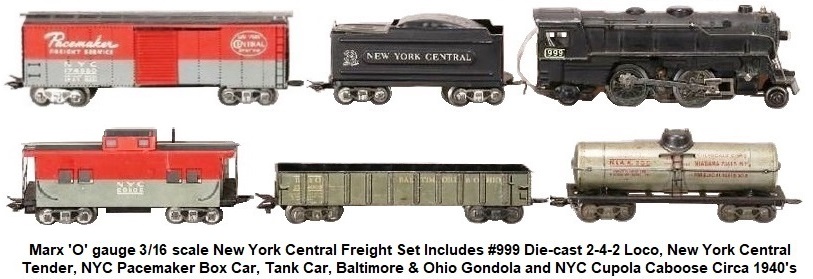
Louis Marx followed A. C. Gilbert's idea to
manufacture a scale train in 'O' gauge. Rather than use the 1:48 that is native to 'O', Gilbert opted on a smaller
1:64 scale model. This would allow long cars to negotiate tight O-31 turns. The resulting Marx 3/16" scale tinplate trains
became popular sellers as they featured a high degree of detailing in the lithographed decorations and the railroad
heralds utilized were prototypically accurate. The early models made during the pre-war era and early post-war periods
featured smaller, more scale sized trucks and wheelsets. The later production cars were equipped with larger non-scale
sized trucks and wheelsets. The Marx 3/16" line remained in production through 1954.
Marx 'O' gauge 3/16" Tinplate Lithographed Freight Cars

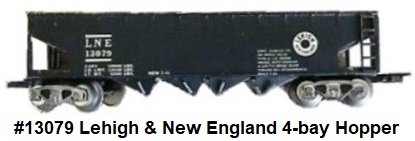

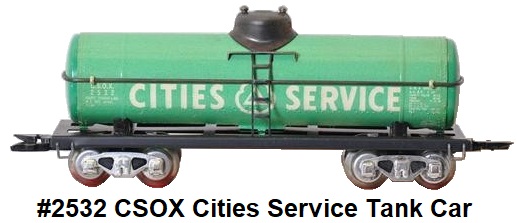
Marx also operated numerous toy manufacturing plants overseas and also produced and distributed toys in
England from 1937 through 1967. The original British factory was located in Dudley. The Marx Company had enjoyed solid and
steady growth until the start of World War II, when factories had to be converted for the war effort. After the war
the Company relocated British production to a new site at Swansea Industrial Estate. The Estate had been opened in 1945 by
King George VI and Queen Elizabeth as part of the British Government's attempt to revitalize South Wales. Louis Marx & Co.
Limited took possession of their new factory at Ystrad Road, Swansea Industrial Estate, Fforestfach, West Glamorgan in
September 1948. In 1967, the UK Company was bought by Dunbee Combex and continued to produce Marx toys under the name of
Louis Marx and Company Limited until 1976.
British Marx Trains



After the war, Marx came back as the world's largest manufacturer of toys, producing mechanical
toys, model trains, toy guns, cars, ride-ons, play sets, and doll houses. During the 1940's Marx was producing
trains in both 'O' gauge and HO gauge. They offered complete sets, and a line of accessories that included signals,
crossing gates and building structures. The company grew even stronger into
the "Golden Era" of the 1950's. By 1955, Marx produced over 20% of all the toys sold in the U.S., and
had factories in ten different countries, including Japan, with divisions such as Linemar. The Linemar subsidiary produced
 and distributed mechanical and battery operated toys for a much less expensive cost than those produced at Marx's US
based manufacturing facilities. Linemar went out of business however by the late 1960's. Marx also
distributed toys produced by manufacturers in Germany, including those from Distler.
This may have been pushed upon by toy makers of war damaged countries needing a strong re-start and presence in the
US. Marx continued developing its scale line of trains with more cars and a larger diecast locomotive, the #666. Soon
came the #333, a long, scale model of the popular Pacific type locomotive.
and distributed mechanical and battery operated toys for a much less expensive cost than those produced at Marx's US
based manufacturing facilities. Linemar went out of business however by the late 1960's. Marx also
distributed toys produced by manufacturers in Germany, including those from Distler.
This may have been pushed upon by toy makers of war damaged countries needing a strong re-start and presence in the
US. Marx continued developing its scale line of trains with more cars and a larger diecast locomotive, the #666. Soon
came the #333, a long, scale model of the popular Pacific type locomotive.
Marx O gauge Tin Litho Military Trains
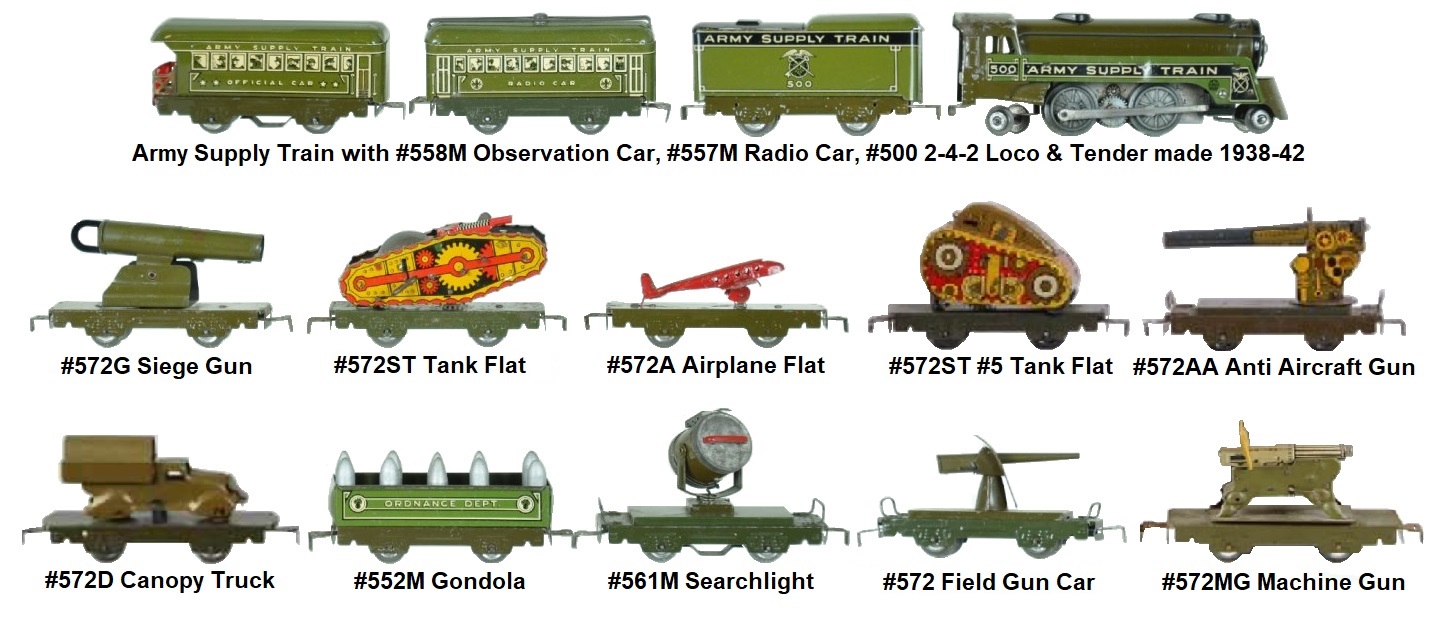
In 1950 Marx was challenged by a toy making competitor named Unique Art
who introduced a low cost line of lithographed tin 'O' gauge toy trains, using tooling of its own design along with some
recycled tooling it acquired from the defunct Dorfan Company. Like Marx, Unique sold its trains
in inexpensive ready to run boxed sets that included track and a transformer. The Unique Art line featured 4 wheel cars
similar to Marx's, but at 7½" long, these cars were slightly bigger in size than Marx's tinplate litho 6" freight cars.
Unique's president, Sammy Bergman, was a good friend of Louis Marx, and the two men's companies at times cooperated, with
Marx providing tooling to Unique and sometimes acting as a distributor for Unique's products. Louis Marx saw the development
and sale of toy trains by Unique as a betrayal and responded by creating a new 7" tin-litho 4-wheel 'O' gauge Marx line that
featured plastic knuckle couplers. One of the highlights of the new 7" Marx offerings were a few multi-colored box cars
whose lithography rivaled the designs of Lionel's famous 6464 series box cars. These Marx box cars included the red, white
and blue State of Maine car and a red Pennsylvania Merchandise Service car. Needless to say, Unique Art stopped producing
its trains after only 2 years. Marx's 7" 4-wheel trains proved unpopular, and their life span was brief as well. Many Marx
operators have been known to modify the 7" 4-wheel trains with 3/16" scale trucks, to add variety to their 3/16" collections
and freight consists.

Marx 'O' gauge 7" Freight Cars
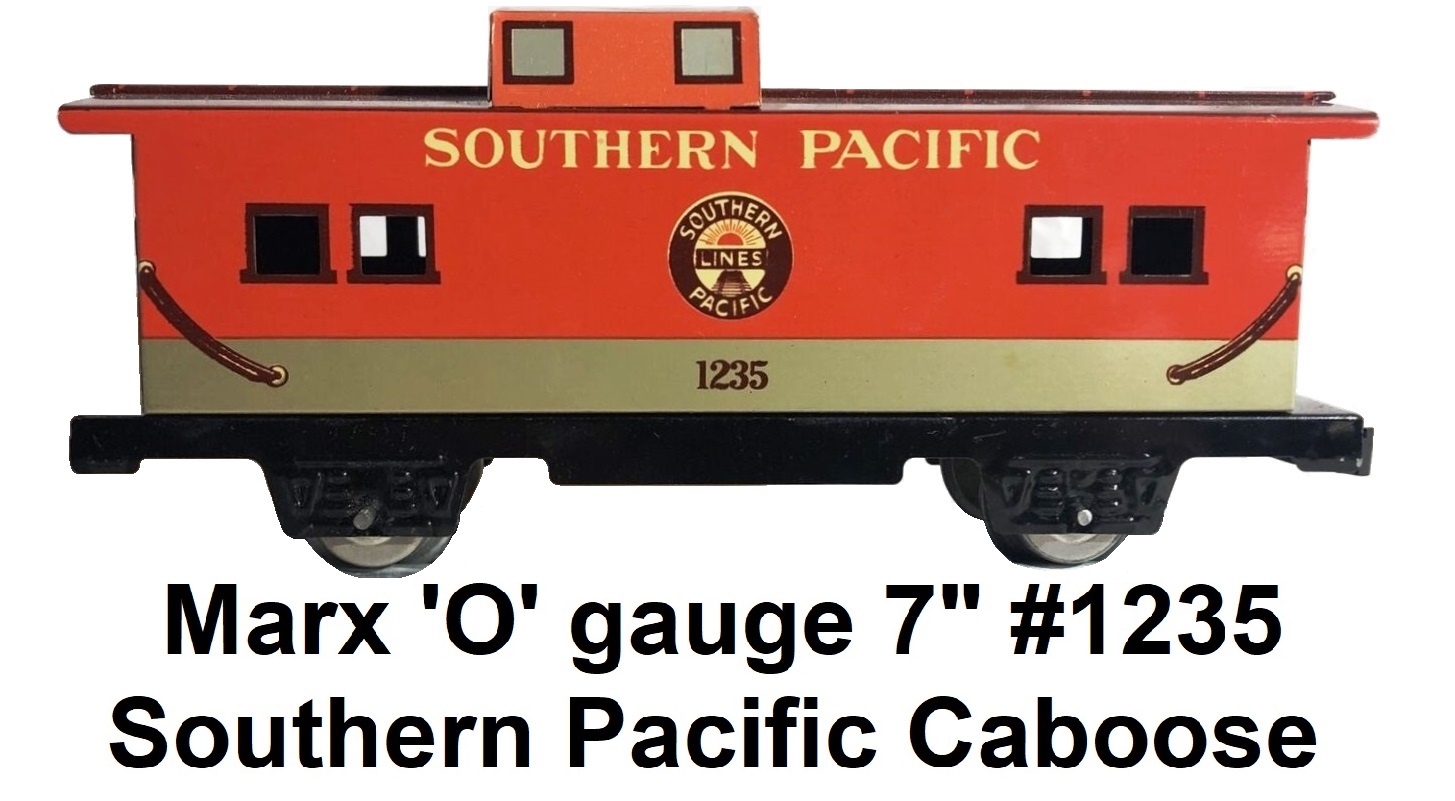
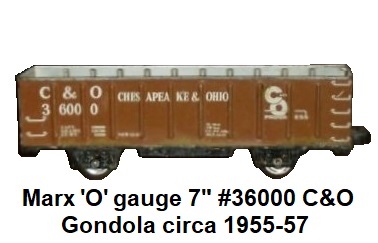
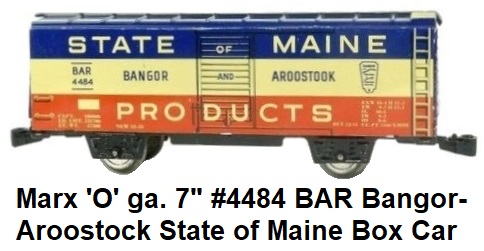
 Marx's marketing strategies included mass production and mass marketing through
chain stores, reproducing new toys from basic components and repackaging existing products
using television or movie tie-ins. Up until 1959, Marx had resisted the use of a newfangled invention called
television to promote his products. After reconsidering, he decided to go after the TV market in a big way.
His plan was to reach 27 million kids with a massive television ad campaign of toy commercials over a three-month period,
strategically placed during the summer holidays. Exposure to this blitz was estimated to exceed one billion. This exposure
prompted Marx to create a company mascot, known to many as Magic Marxie. This campaign helped to make Marx even more
of a household name.
Marx's marketing strategies included mass production and mass marketing through
chain stores, reproducing new toys from basic components and repackaging existing products
using television or movie tie-ins. Up until 1959, Marx had resisted the use of a newfangled invention called
television to promote his products. After reconsidering, he decided to go after the TV market in a big way.
His plan was to reach 27 million kids with a massive television ad campaign of toy commercials over a three-month period,
strategically placed during the summer holidays. Exposure to this blitz was estimated to exceed one billion. This exposure
prompted Marx to create a company mascot, known to many as Magic Marxie. This campaign helped to make Marx even more
of a household name.
Marx 'O' gauge Plastic Trains


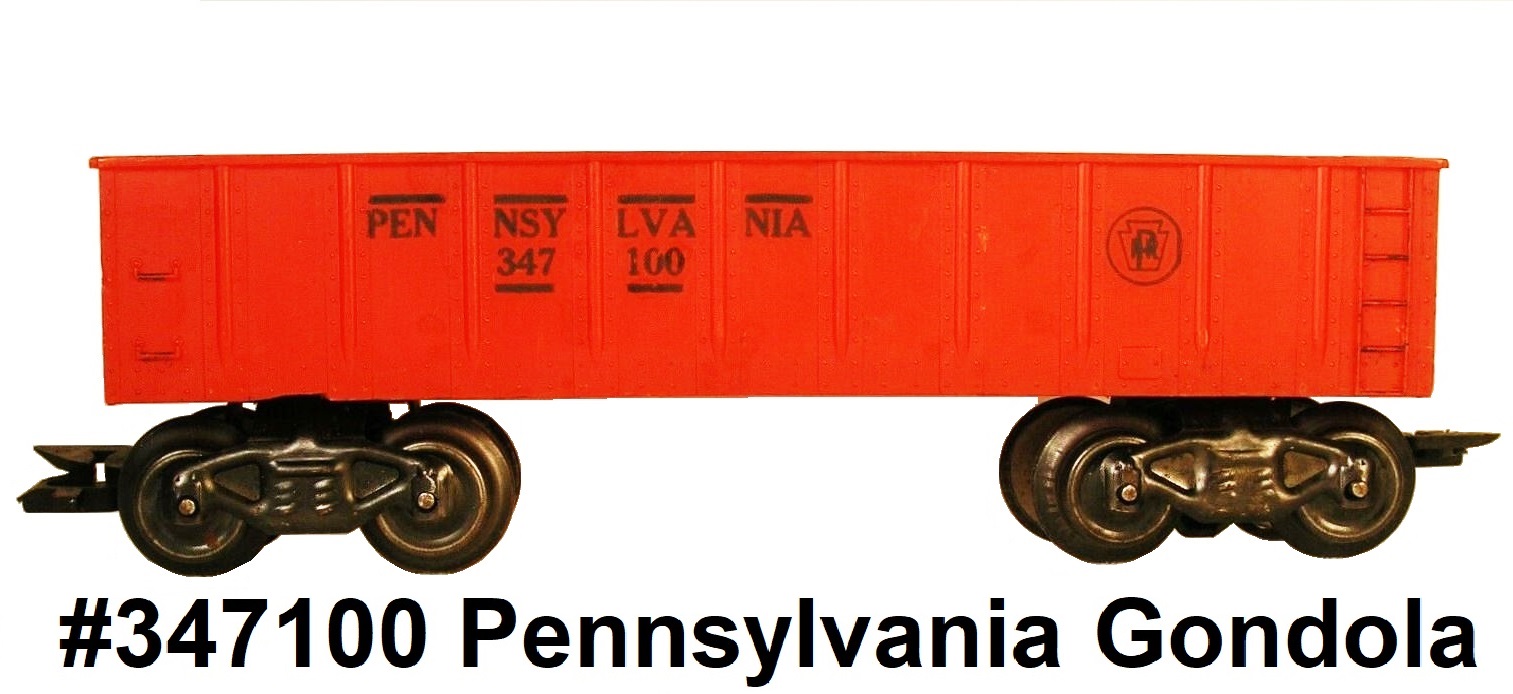

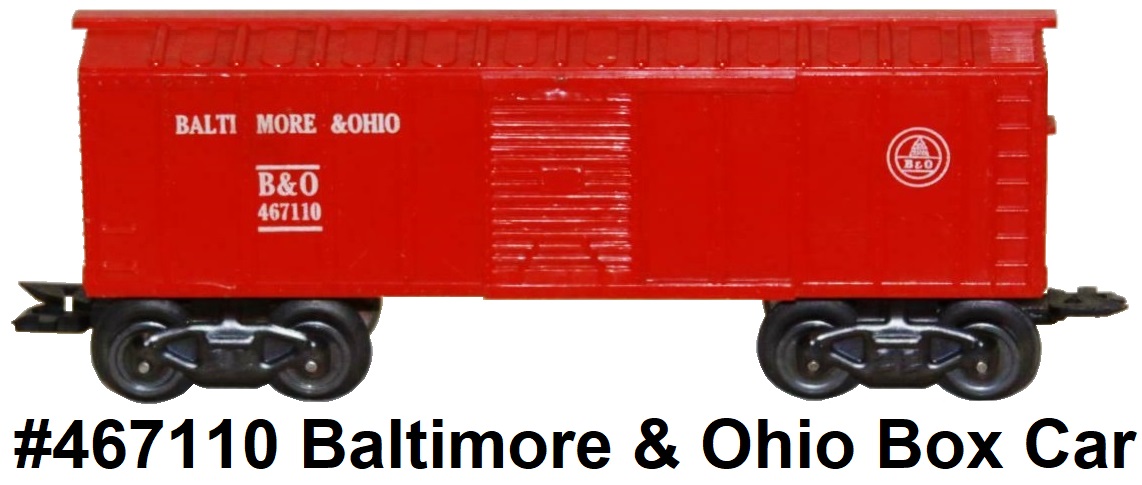
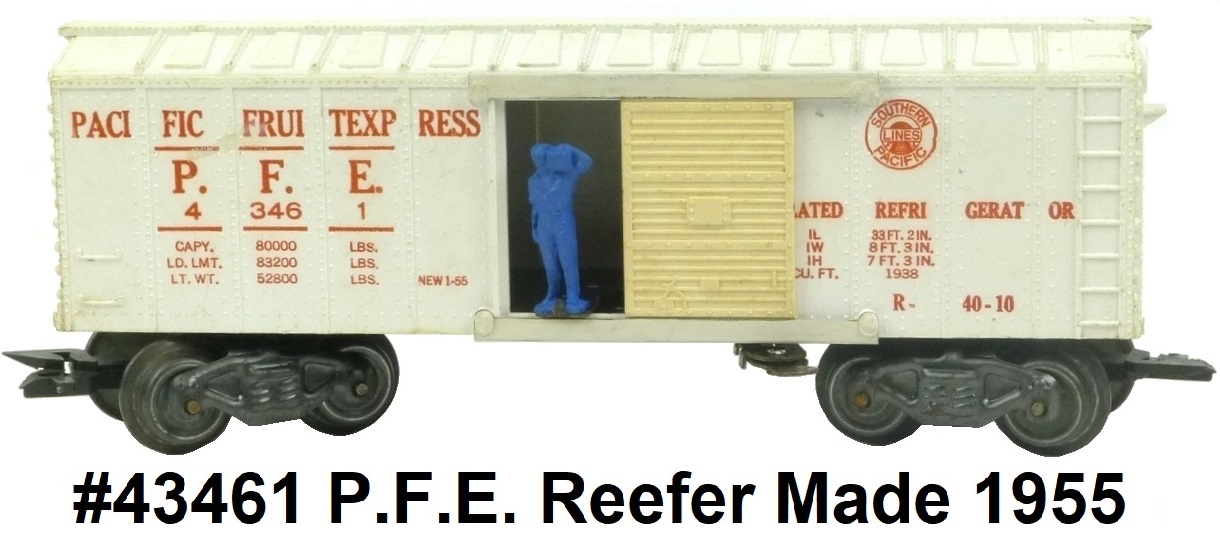
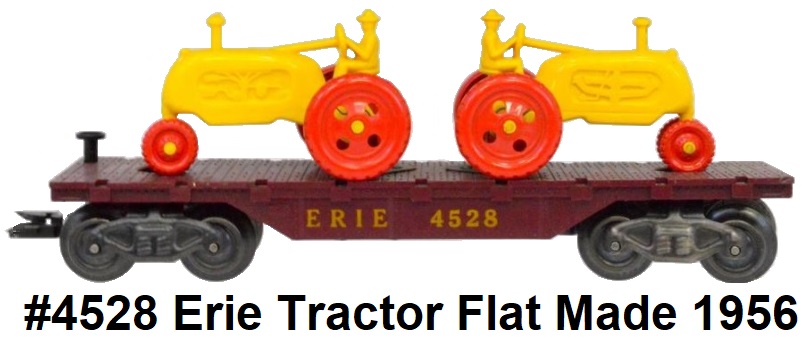

Marx began to convert from using stamped steel to plastic in 1952. Marx's principle concern was maximum production and quality
at the lowest price. As a result there were endless variations of products. Additionally Marx often did not place catalog
numbers on many trains. The first offerings were 1:64 scale for 'O' gauge track operation. Early versions were fitted with the
3/16" scale trucks that the tinplate cars had come with, but later versions had larger trucks. A few had 4-wheels.
In an attempt to present realism, on some plastic trains that were equipped with only 4 wheels, Marx simulated
real 4-wheel trucks with plastic molded wheelsets in the car shells. The 4-wheel plastic line replaced Marx's original
6" line of tin-litho trains. The initial plastic sets issued by Marx were unmarked but came with accurate railroad decals
that could be applied by the consumer.
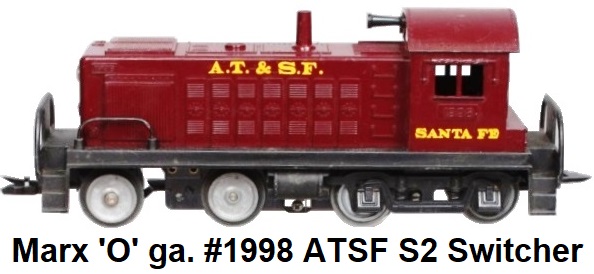 In 1956 Louis Marx & Co. acquired the former tooling of Hafner. This
tooling had become the property of All Metal Products Co., the manufacturers of Wyandotte toy trucks and
cars in 1951. All Metal Products Co. had been selling the remaining Hafner inventory and using the tooling to make
new trains which were marketed under the Wyandotte name. The Wyandotte trains competed in the marketplace directly with Marx
products. Louis Marx essentially acquired Wyandotte so that he could eliminate this competitor. Marx cleverly
shipped the Wyandotte train tooling to its subsidary in Mexico for production in an isolated market to keep it out of the
hands of any other would be competitors.
In 1956 Louis Marx & Co. acquired the former tooling of Hafner. This
tooling had become the property of All Metal Products Co., the manufacturers of Wyandotte toy trucks and
cars in 1951. All Metal Products Co. had been selling the remaining Hafner inventory and using the tooling to make
new trains which were marketed under the Wyandotte name. The Wyandotte trains competed in the marketplace directly with Marx
products. Louis Marx essentially acquired Wyandotte so that he could eliminate this competitor. Marx cleverly
shipped the Wyandotte train tooling to its subsidary in Mexico for production in an isolated market to keep it out of the
hands of any other would be competitors.
By now Marx was producing toy-like trains for young children, colorful entry level trains for older
children, and a deluxe line for more serious rail hobbyists. The deluxe line featured more detailed rolling stock such as
automobile carrier box cars, trailer-on-flat cars, open framed auto carriers and depressed center cars. Better locomotives
appeared in the form of plastic shelled E7 diesels, Alco S2 switchers, and a General Electric 70-ton switcher with four drive
wheels but simulated 4-wheel trucks. The diesels used the same time-tested Marx double reduction motor, with different
wheels.

Marx decided to enter the HO market in 1957 by releasing an extensive line of HO scale model trains.
Offerings included F3 diesels, an 0-4-0 Sadle Tank loco, an 0-4-0 hustler diesel yard switcher, a GP-9 diesel, and a 4-6-4
Hudson along with freight cars and streamline passenger cars. These trains proved successful, more so than Lionel's and A. C.
Gilbert/American Flyer's offerings from that period. While not as detailed as premium brands like
Athearn's offerings, the Marx products provided
a fair amount of scale fidelity at a great price. After Marx failed, Model Power purchased all the HO tooling and continued to
use it to produce its starter sets, putting its own lettering on the original Marx designed shells.
In an attempt to cash in on the popularity of TV westerns, in 1959 Marx created its 4-4-0 William Crooks
1860's style 'O' gauge locomotive. This was a plastic molded model of the actual prototype, a St. Paul and Pacific
steam engine that still exists. Previously, Marx had achieved success with licensing its products, unfortunately the
decision to package the William Crooks train in a set themed after the TV show 'Tales of Wells Fargo' did not prove
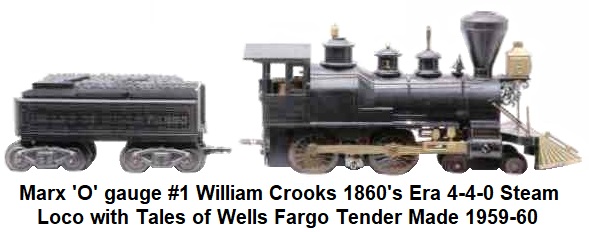 successful. Although the show ran for 5 years, it was not as popular as other westerns like Gunsmoke or Bonanza. Timing was
opportune as 1959 was the peak year for TV westerns, but a wiser choice in licensing would have improved sales. The set
was only offered exclusively through Montgomery Ward for 2 years and is considered to be very rare by collectors. Marx
brought the William Crooks style 4-4-0 western era locomotive back in 1962 powered by a clockwork drive. This time the
loco came with a tinplate tender marked '1st. Divn. St. P. & P.R.R.' In 1973, Marx issued its heritage train set, sold
through Sears Roebuck, that featured a simplified William Crooks loco without its leading 4-wheel truck, no smoke unit,
and a shortened smoke stack. It was packaged with a plastic tender lettered '1st. Divn. St. P. & P.R.R.' and old-style
plastic train cars.
successful. Although the show ran for 5 years, it was not as popular as other westerns like Gunsmoke or Bonanza. Timing was
opportune as 1959 was the peak year for TV westerns, but a wiser choice in licensing would have improved sales. The set
was only offered exclusively through Montgomery Ward for 2 years and is considered to be very rare by collectors. Marx
brought the William Crooks style 4-4-0 western era locomotive back in 1962 powered by a clockwork drive. This time the
loco came with a tinplate tender marked '1st. Divn. St. P. & P.R.R.' In 1973, Marx issued its heritage train set, sold
through Sears Roebuck, that featured a simplified William Crooks loco without its leading 4-wheel truck, no smoke unit,
and a shortened smoke stack. It was packaged with a plastic tender lettered '1st. Divn. St. P. & P.R.R.' and old-style
plastic train cars.
Marx 'O' gauge William Crooks Wells Fargo Set 7" Tin Litho Passenger Cars
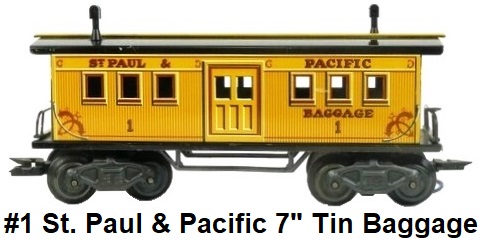
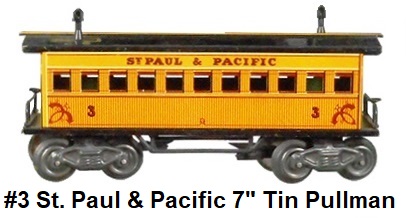
In the 1960's Marx's toy line capitalized on the space toy and robot craze. It produced the Big Loo "Your
friend from the Moon" in 1964 and originated the popular Rock 'Em Sock 'Em Robots. There were even a few train cars issued
with space age themes, such as the #X-246 Chemical Rocket Fuel tank car, the #1796 Rocket Launcher flat car, the #1799 USAX
gondola, and the #1963 Missile Control Center caboose. To pull these cars in sets, Marx issued a #1798 Cape Canaveral Express
0-4-0 small 70 Ton diesel switcher locomotive. In 1963, Marx began making a series of plastic figurines called the Nutty Mads
which included some almost psychedelic creations such as Donald the Demon: a half duck half madman, driving a miniature car. A
Flintstones play set train was also developed.
 During the post-war era, the Marx locomotive lineup consisted of the #666 diecast and #1666 plastic
counterpart 2-4-2 steamers, the #333 diecast 4-6-2 Pacific, its #1829 plastic counterpart and the #1029 plastic 4-6-4
Hudson, the #400 and #490 cheap steamers, the #6000 series tin-litho AA units, the plastic E7 diesels in ABA
configurations, the plastic S2 and 70-ton diesels, and the William Crooks 1860's era 4-4-0 steamer in plastic.
The most common road names found on Marx locomotives are New York Central, Santa Fe, Union Pacific,
Western Pacific and Southern Pacific. The #333 locomotive with its 4-6-2 wheel arrangment was the largest steam locomotive
ever produced by Louis Marx & Co. Freight cars bore many of the same names, plus Baltimore & Ohio, Rock Island, Penn
Central and Erie. One non-road is Allstate, a trademark of Sears used in making sets for the catalogue vendor. 2 road names
that appeared on Marx trains that were not widely seen on competitors products were Kansas City Southern and Seaboard. The
Seaboard Coast Line paid for the tooling of the Marx double-door deluxe boxcar, which was to be sold as a model of one
of their trains. Seaboard was promoting freight service via those cars at the time.
During the post-war era, the Marx locomotive lineup consisted of the #666 diecast and #1666 plastic
counterpart 2-4-2 steamers, the #333 diecast 4-6-2 Pacific, its #1829 plastic counterpart and the #1029 plastic 4-6-4
Hudson, the #400 and #490 cheap steamers, the #6000 series tin-litho AA units, the plastic E7 diesels in ABA
configurations, the plastic S2 and 70-ton diesels, and the William Crooks 1860's era 4-4-0 steamer in plastic.
The most common road names found on Marx locomotives are New York Central, Santa Fe, Union Pacific,
Western Pacific and Southern Pacific. The #333 locomotive with its 4-6-2 wheel arrangment was the largest steam locomotive
ever produced by Louis Marx & Co. Freight cars bore many of the same names, plus Baltimore & Ohio, Rock Island, Penn
Central and Erie. One non-road is Allstate, a trademark of Sears used in making sets for the catalogue vendor. 2 road names
that appeared on Marx trains that were not widely seen on competitors products were Kansas City Southern and Seaboard. The
Seaboard Coast Line paid for the tooling of the Marx double-door deluxe boxcar, which was to be sold as a model of one
of their trains. Seaboard was promoting freight service via those cars at the time.

Most Marx electic powered locomotives were equipped with a simple 'E' unit for reversing direction of the
motor. However, less expensive locomotives did not have a reversing mechanism. The Marx 'E' unit was only capable of forward
and reverse. Unlike other manufacturer's 'E' units, there was no neutral position. Marx's better steam outline locos were also
equipped with a smoke unit. These smoke units operated on liquid fluid placed directly into the loco's smokestack. When
the loco was running, a heating element would turn the liquid into smoke and provide the effect of a smoking steam
locomotive. In some less expensive sets, Marx experimented with a different type of smoke unit that used what was referred
to as an airbulb. A packet of baking powder was included with the set. The baking powder could be poured down the smoke
stack on the locomotive onto the airbulb. There was a bellows mechanism attached to the motor, and when the loco was
in motion, smoke was supposed to puff out of the smokestack. These units did not operate very well.
 In 1972 Louis Marx sold his company to Quaker Oats Company for $54 million ($359 Mil. in 2021 dollars) and
retired at the age of 76. Quaker Oats continued production until 1975. Quaker owned the Fisher-Price
brand, but struggled with Marx. Quaker had hoped Marx and Fisher-Price would have synergy, but
the companies' sales patterns were too different. Marx has also been faulted for largely ignoring
the trend towards electronic toys in the early 1970's. In late 1975, Quaker closed the plants in
Erie and Girard, and in early 1976, Quaker sold its struggling Marx division to the British
conglomerate Dunbee-Combex-Marx, who had bought the former Marx UK subsidiary in 1967. The complete inventory from the
Pennsylvania plant of 700 assembled Marx double reduction geared remote reverse electric motors was sold to the
United States Toy Train Company (USTTC) in California when Quaker exited the toy train business.
The basic Marx motor was famous for never wearing out and for running smoothly at low speeds.
In 1972 Louis Marx sold his company to Quaker Oats Company for $54 million ($359 Mil. in 2021 dollars) and
retired at the age of 76. Quaker Oats continued production until 1975. Quaker owned the Fisher-Price
brand, but struggled with Marx. Quaker had hoped Marx and Fisher-Price would have synergy, but
the companies' sales patterns were too different. Marx has also been faulted for largely ignoring
the trend towards electronic toys in the early 1970's. In late 1975, Quaker closed the plants in
Erie and Girard, and in early 1976, Quaker sold its struggling Marx division to the British
conglomerate Dunbee-Combex-Marx, who had bought the former Marx UK subsidiary in 1967. The complete inventory from the
Pennsylvania plant of 700 assembled Marx double reduction geared remote reverse electric motors was sold to the
United States Toy Train Company (USTTC) in California when Quaker exited the toy train business.
The basic Marx motor was famous for never wearing out and for running smoothly at low speeds.
A downturn in the British economy in conjunction with high interest rates caused Dunbee-Combex-Marx
to struggle, and these unfavorable market conditions caused a number of British toy manufacturers,
including Dunbee-Combex-Marx, to collapse. By 1978 the Marx brand disappeared, and Dunbee-Combex-Marx
filed for bankruptcy and was liquidated in 1980. The Marx assets were then liquidated, with many of
the patents and molds going to Mego Corporation, another famous maker of dime store toys, and a large
number of them going to Canadian toy maker Aurora. The tooling for making the reliable Marx double
reduction geared electric motors was sold to Soviet Russia.
American Plastic Equipment of Florida resurrected the
Marx name by acquiring the company's assets in 1982, and intellectual rights in 1988. By that time, the
value of Marx toys and play sets had skyrocketed in the collector markets, which in turn triggered a
demand for the toys to be reissued.
The rights to some of Marx's toys are now owned by other companies, and some of its former products
are still in production. Many of the Marx train dies were purchased by MDK, who changed only the name imprint,
and as K-Line produced plastic 'O' scale train cars and
scenery using former Marx molds, which it marketed under its own brand name. K-Line's original version of the S2 switcher
and RDC BUDD car were based on recast Marx body shells. The K-Line 4-6-2 steam outline loco also used original Marx #333
molds and tooling and the Marx #1829 was used by K-Line for their 4-6-4 in a couple of their circus sets.
K-Line recast many Marx accessories, including the operating barrel loader, operating diesel
fueling station, operating switch tower and operating crossing gate. K-Line street lamps were Marx recasts, too. In their
line of K-LineVille buildings, you can find Marx as the supermarket, police station, school, fire house, airport hangar,
L-shaped farm house, ranch house, colonial house, farm and barn, church, water tower, grade crossing, unpainted people
and farm animal figures, cars and telephone poles. All these original Marx designs became the property of Lionel in 2006
when K-Line's assets, including its inventory, intellectual property, tooling, and trademarks were acquired. The
1950's Marx #333 steam loco was put back into production by Lionel in 2019.
Marx Toys, Inc., was sold and transformed into 'Marx Toys & Entertainment, Inc. Marx Trains, Inc. produced
lithographed tin trains, both of original design and based on former Louis Marx designs. The Marx trademark
became the property of American Plastics of Sebring, Ohio in 1992, and was licensed to James and Debby Flynn of Addison, IL.,
who made newly designed stamped steel 'O' gauge Marx locomotives and rolling stock in the
original vintage tin litho-style starting in 1993 until 2004. These trains were not reproductions and were mechanically
different from the originals. Collectors often refer to this period of train production as Modern Marx. The Flynn's
sold the rights to Ameritrains in 2004. There was only limited Ameritrains production thereafter and the line
faded away after 2007. Model Power produced HO scale trains from old Marx molds for many years. In 2018, Model Power's tooling
was acquired by Lionel. Rights to the original Marx Big Wheel are owned by KidsWheels, Inc., and Rock 'Em Sock 'Em Robots
was claimed by Mattel. Marx's toy soldiers and other plastic figures are in production today in
China for the North American market and are mostly targeted at collectors, although they sometimes
appear on the general consumer market, particularly at dollar stores.
 The Marx name changed hands several times. Despite the similar names, none of
the more recent Marx-branded companies had any connection to the original Louis Marx and Company. Louis Marx died
in 1982 at the age of 85, however his memory long remains in what he has left the world. He has often been referred to as
the Henry Ford of the toy business. Antique Marx trains remain popular amongst collectors today, and are usually
widely available at bargain prices. Marx items that failed to sell well are the most rare and collectible today due to their
scarcity and limited production. The 'Bunny Express', a 1936 tin toy mechanical train with a rabbit-shaped engine and open
cars instantly flopped when it was released for the Easter season. Only a very few were made, so
collectors covet this item!
The Marx name changed hands several times. Despite the similar names, none of
the more recent Marx-branded companies had any connection to the original Louis Marx and Company. Louis Marx died
in 1982 at the age of 85, however his memory long remains in what he has left the world. He has often been referred to as
the Henry Ford of the toy business. Antique Marx trains remain popular amongst collectors today, and are usually
widely available at bargain prices. Marx items that failed to sell well are the most rare and collectible today due to their
scarcity and limited production. The 'Bunny Express', a 1936 tin toy mechanical train with a rabbit-shaped engine and open
cars instantly flopped when it was released for the Easter season. Only a very few were made, so
collectors covet this item!
